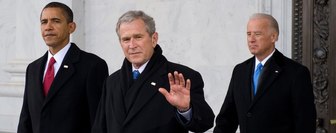There is a national preference for divided government, which refers to the president and the majority in at least one of the chambers of Congress hailing from different political parties. The post-election Economist/YouGov Poll was conducted after major news organizations projected that the Democratic candidate, former Vice President Joe Biden, had won more than 270 electoral votes and thus would assume the presidency. Those who voted to re-elect GOP President Donald Trump, responding after the election, favor divided government three to one (60% to 20%). In a poll conducted just before the 2016 election, President Trump’s voters were closely divided (38% to 39%) on whether government should be divided.
Overall, unified government – meaning the president and majorities in both houses of Congress are from the same party – was narrowly preferred (40% to 35%) by registered voters in 2016. In both years, those who voted for the Democratic nominee mostly wanted unified government – which Democrats had not had since the first two years of Barack Obama’s administration.
Voters didn’t vote as if they wanted divided government, though, that is in fact what they got. The latest Economist/YouGov Poll indicates that the vast majority of voters supported candidates for the US House of Representatives from the same party as their presidential choice. President Trump heading the GOP ticket may have helped Republicans keep seats in the Senate and gain seats in the House. Those who switched parties in their Congressional votes numbered in the low- to mid-single digits.
Whatever parties control these branches of government, voters claim they support cooperation, and by a wide margin – 80% vs 20%. Asked whether they want the President and Congress to work together and compromise in order to get things done, or to stick to their principles, both sets of voters say they want compromise.
Biden supporters (96%) overwhelmingly want the branches of government to compromise with each other, and so do Trump voters (61%). While the desire for compromise among the President’s voters is wide, it is lower than the nearly unanimous support expressed by those who voted for the Democrat. Trump voters who describe themselves as “very conservative” are about as likely to reject compromise (52%) as to favor it (48%), while 64% of those Trump voters who are “conservative” say they want compromise.
See the toplines and crosstabs from this week’s Economist/YouGov Poll
Methodology: The Economist survey was conducted by YouGov using a nationally representative sample of 1,500 registered voters interviewed online between November 8 - November 10, 2020. This sample was weighted according to gender, age, race, and education based on the American Community Survey, conducted by the US Bureau of the Census, as well as 2016 Presidential vote, registration status, geographic region, and news interest. Respondents were selected from YouGov’s opt-in panel to be representative of all US citizens. The margin of error is approximately 3.2% for the overall sample.
Image: Getty









